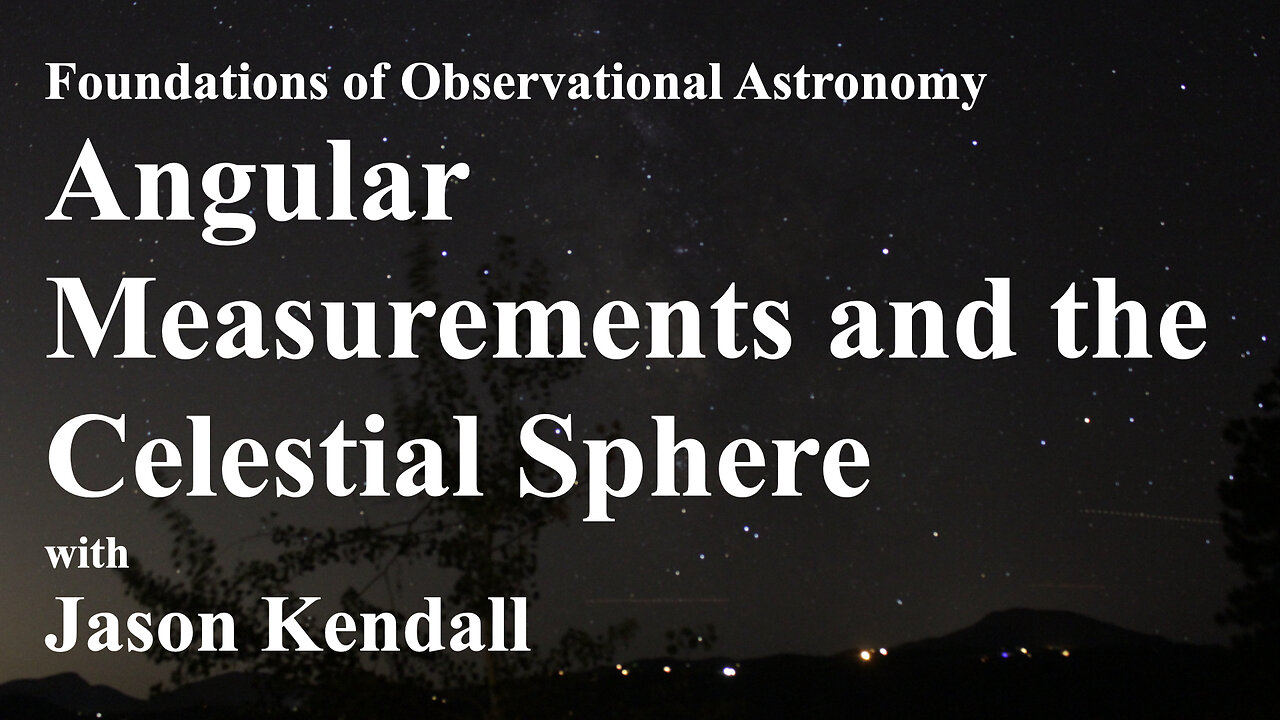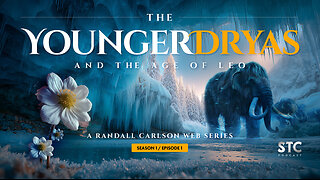Premium Only Content

Exploring Star Positioning and Angular Separation Using the Equatorial Coordinate System
In this presentation, I will examine the concepts of star positioning and angular separation through the lens of the equatorial coordinate system. This system serves as a navigational aid for the celestial sphere, an abstract representation of the heavens where stars appear to be stationary, despite their actual movement over time. Utilizing a DSLR camera, I captured images of stars against a dark sky to illustrate the varying positions of celestial bodies. To effectively map these positions, we employ angular separation measurements using rudimentary tools, such as our hands. For example, a fist held at arm’s length approximates an angular measurement of ten degrees, while a pinky finger corresponds to one degree. I will introduce the equatorial coordinate system, which is conceptualized as an imaginary sphere surrounding the Earth. This framework encompasses essential components such as the celestial equator and poles. Although stars may seem fixed on the celestial sphere, this perception is a useful abstraction for the purpose of mapping. Angular measurements can be further delineated into degrees, arc minutes, and arc seconds, which facilitates precision in our observations. Notably, one degree is equivalent to sixty arc minutes or 3,600 arc seconds. These minute measurements are instrumental in accurately determining star positions. Long-exposure photography of star trails vividly illustrates the concept of the celestial sphere. The stars manifest a rotational motion around a central point, identified as the celestial pole. The altitude of Polaris, known as the North Star, serves as a tool for determining one’s latitude on Earth. The celestial sphere and the equatorial coordinate system collectively provide a robust framework for the observation and mapping of the night sky. In our subsequent session, we will engage in a more in-depth exploration utilizing sky simulation tools such as Stellarium and SkySafari.
Credits: Juan Carlos Casado: https://twanight.org/gallery/star-trails-and-the-equinox-sunrise/ Matthew Saville: https://fstoppers.com/profile/matthewsaville
-
 1:17:46
1:17:46
Squaring The Circle, A Randall Carlson Podcast
22 hours agoRandall Carlson Defines The Younger Dryas
1.57K4 -
 40:03
40:03
WanderingWithWine
7 days ago $0.07 earnedBuy a Home for Less Than a Car? 5 Italian Homes for Sale in Puglia
671 -
 10:09
10:09
Advanced Level Diagnostics
2 days agoWhy I Never Use Cheap Fuses!
30 -
 10:23
10:23
Forrest Galante
2 hours agoAsking an Indian Billionaire Why He Is Saving 1 Million Animals
55.6K9 -
 8:43
8:43
MattMorseTV
17 hours ago $27.67 earnedTrump CALLED Schumer’s BLUFF.
27.8K86 -
 LIVE
LIVE
Joe Donuts Live
3 hours ago🟢 Fast XP Farming in Fortnite? | DropZone Sunday
344 watching -
 LIVE
LIVE
Lofi Girl
3 years agolofi hip hop radio 📚 - beats to relax/study to
268 watching -
 LIVE
LIVE
B2ZGaming
7 hours agoPumped To Play!!! | B2Z Gaming
81 watching -
 3:01:28
3:01:28
PandaSub2000
20 hours agoDEATH BET w/MrMatthews + GAME BOY! (Edited Replay)
27.9K2 -

Ashaelon
9 hours ago $0.66 earnedWelcome to the Harvest Zone
9.97K4